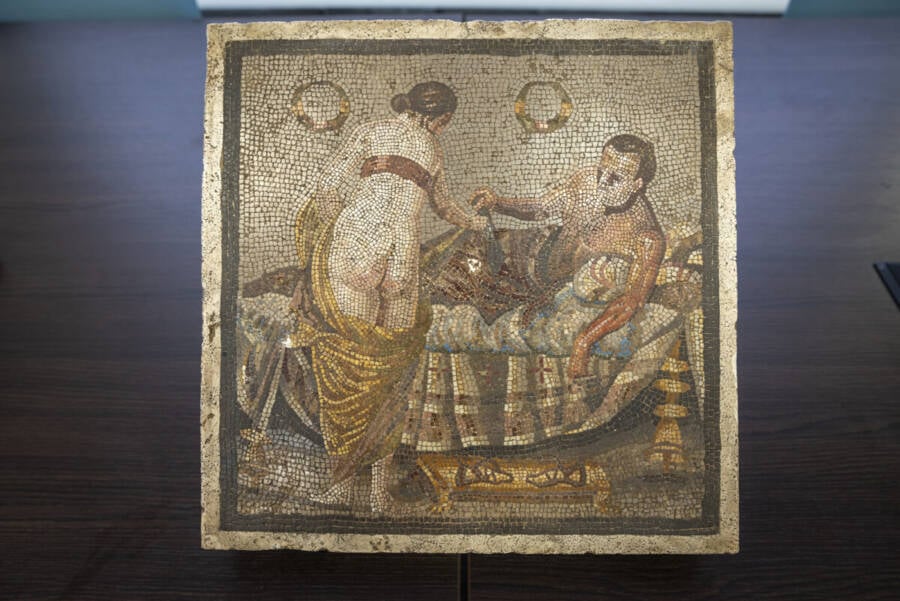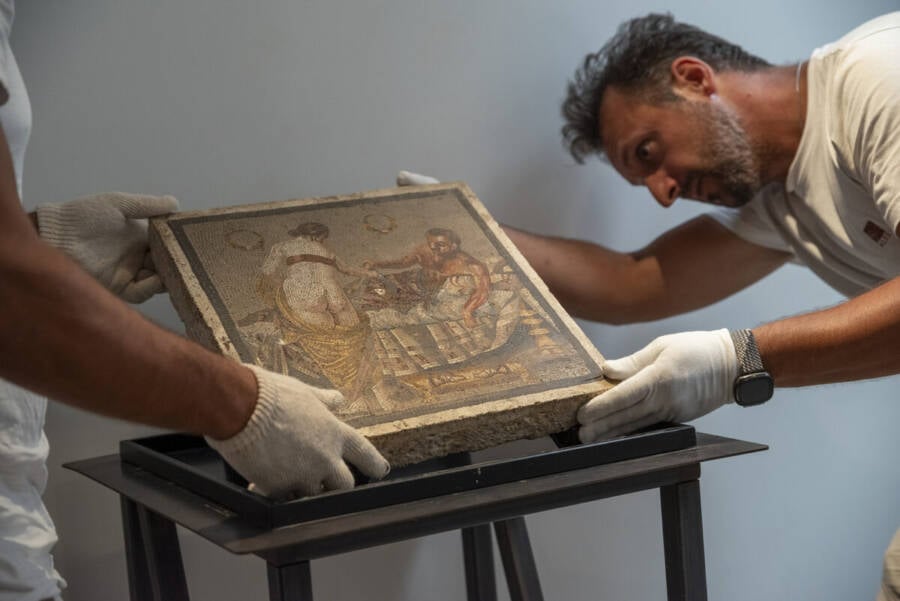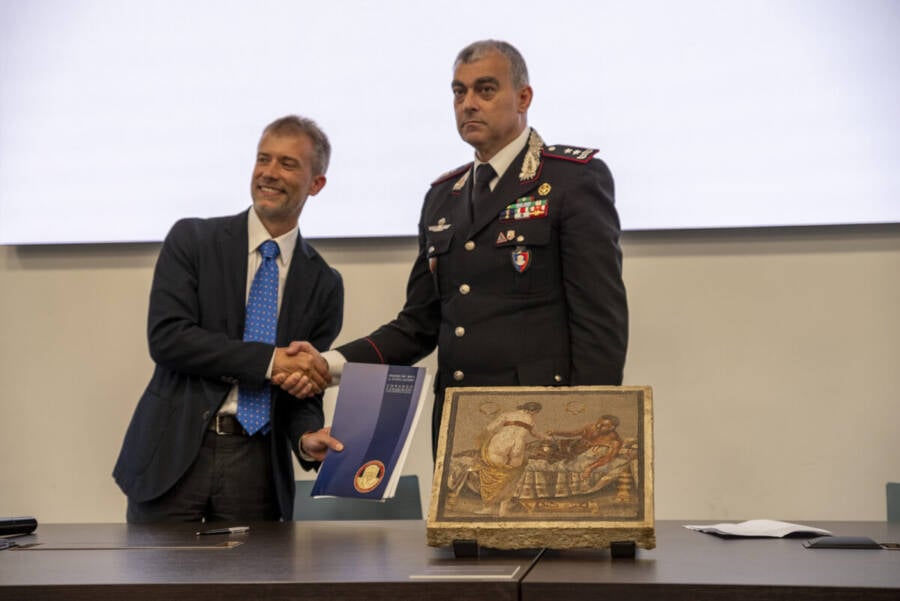The mosaic was stolen by a Nazi captain during World War II and dates to between the late first century B.C.E. and the first century C.E.

Pompeii Archaeological ParkThe stolen erotic mosaic from Pompeii.
During World War II, a Nazi captain returned home with an erotic mosaic that he’d stolen while serving in Italy. The captain gifted the mosaic to a civilian, who left it to his heirs after his death. Now, 80 years later, the mosaic has been returned to Pompeii, from where it was seemingly looted during the war.
While archaeologists at the Pompeii Archaeological Park are thrilled to have reclaimed the object, they acknowledge that something was irrevocably lost in its theft. Without knowing where exactly the mosaic came from, many questions about its provenance will remain unanswered.
The Return Of The Erotic Mosaic
According to a press release from the Pompeii Archaeological Park, the return of the erotic mosaic marked the conclusion of a story that began 80 years ago, when the mosaic was stolen during World War II.

Pompeii Archaeological ParkThe mosaic is around 2,000 years old and was stolen during World War II.
Then, it was taken by a Nazi captain who assisted with the military supply chain in Italy during the conflict. The captain brought the mosaic home to Germany, where he gifted it to a civilian. The civilian then kept the mosaic in his possession until his death several years ago, after which his heirs contacted a Carabinieri unit in Rome dedicated to protecting cultural heritage.
Realizing that the mosaic was “a work attributable to the wartime plundering of works of art belonging to the Italian state heritage,” steps were swiftly taken to repatriate the mosaic to Italy. The Archaeological Park of Pompeii was then able to determine that the mosaic had originated in “the Vesuvian area,” that is, in the vicinity of Mount Vesuvius, which catastrophically erupted in 79 C.E. and destroyed the nearby city of Pompeii.
But while the mosaic is an important piece of Pompeii’s heritage, many questions about it remain.
The Significance Of The Returned Mosaic
Without knowing where exactly the German captain obtained the mosaic, many questions about the priceless piece of art are unanswered. The mosaic panel features an erotic scene of a man lying in bed with a woman standing over him. Archaeologists believe that it likely dates to between the late first century B.C.E. and the first century C.E. and that it “may have decorated the floor of a bedroom in a domus or villa.”

Pompeii Archaeological ParkItalian officials celebrate the return of the mosaic, though its theft means that many questions about it will remain unanswerable.
Aside from its age and likely provenance, archaeologists believe that the mosaic is significant for another reason as well. Rather than depict heroic myths, it seems to show a scene of everyday intimacy between two people and may be part of a cultural turning point in ancient art.
The mosaic joins many other wonders uncovered in Pompeii since archaeological work began there in the 18th century, from a banquet hall full of frescoes and the opulent House of the Vettii to the 2,000-year-old remains of a tortoise and even ancient graffiti.
But, ultimately, many questions about the mosaic will remain unanswered. Because the work of art was stolen, it’s impossible for archaeologists to know where exactly it originated. Thus, it’s difficult to answer questions about the people who may have displayed it some 2,000 years ago. Did they die in the eruption of Vesuvius? Or did they live in a nearby town that wasn’t destroyed?
“Every looted artifact that returns is a wound that heals, so we express our gratitude to the Protection Unit for their work,” Gabriel Zuchtriegel, the director of the Pompeii Archaeological Park, said in the press release.
He continued: “The wound lies not so much in the material value of the work, but in its historical value; a value that is severely compromised by the illicit trafficking of antiquities. We don’t know the artifact’s exact provenance and likely never will; we will conduct further studies and archaeometric analyses to ascertain its authenticity and reconstruct its history to the extent possible. The study, knowledge, and public enjoyment of this heritage are the lotus flowers that grow in the mud of thefts driven by the greed and selfishness of those who steal archaeological artifacts from the community.”
After reading about the erotic mosaic that was stolen during World War II and recently returned to Pompeii, discover the story of the Monuments Men who saved looted masterpieces from the Nazis. Or, look through these stunning photos of Pompeii’s preserved frescoes and learn the stories behind them.





